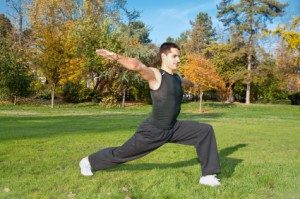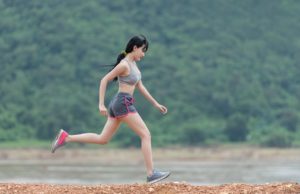We’ve all heard about how important exercise for weight loss is. We’re told that if we eat right and exercise regularly, the pounds will melt away. But how many people have tried that and find that it just doesn’t work- at all? This is the biggest reason so many people give up on their diets or weight loss, or both.

However, before you toss in the towel on your new exercise regime, there are a few things you need to know. First, there is more to the equation than just exercising. You also need a balanced diet that suits your body type, physiology and genes. What does this mean? Well, some people think “diet” means “calorie restriction” but this is not always the case. In fact, restricting your calories too much can actually hinder weight loss.
Often people fail to lose weight because they don’t take in enough fat. Eat fat to lose weight? Am I crazy? No actually, we’re talking about healthy fats and everyone needs some in their diet to maintain a balanced diet. If you’re restricting yourself completely from healthy fats, you could be hindering your weight loss progress.
Here are some other things you need to know about exercise for weight loss.
Exercise Is Only Part of the Equation
As we said before, it’s not all about the exercise. You also have to eat right. In addition to diet, getting enough rest at night and drinking plenty of water are important. A healthy diet from the beginning full of plenty of water (at least 8 glasses a day and more in hot weather and when you exercise) will put you on the right path to weight loss.
It’s much easier to cut 1,000 calories from a heavy diet than it is to burn 1,000 calories in exercise. So adjusting your diet where appropriate in addition to exercise will give you optimal results.
Then there is also the mental aspect of weight loss. Your emotional state has a huge impact on your success. Are you dealing with emotional problems that might have caused your weight gain in the first place or that could be blocking your path to success?
Exercise is Essential for Weight Maintenance
If you achieve your weight loss goals, you have a lot to be proud of. You should take time to properly celebrate and appreciate this accomplishment. However, you also need to continue to exercise in order to maintain this weight loss and new healthy lifestyle.
This is where a lot of people mess up. They begin to see results and see the weight dropping off and then they start to slack off. They think that because they’ve lost a few pounds that they can skip the exercise occasionally and it won’t make a difference but it does. You need to exercise regularly to maintain a healthy weight.
Another problem with this way of thinking is that once you begin skipping a routine here and there, it’s very easy to do it more often. Before you know it, you might give it up completely and the pounds will slowly start coming back before you even have a chance to reach your weight loss goal.
Some people do great and they workout and eat healthy until they reach their desired weight. Then, they start to slip. They believe that because they have reached their weight loss goal that they can begin skipping the exercise routine. In addition, they believe that it won’t hurt to have a few donuts or similar treats every now and then. The problem is that it will be easy to fall back into the same routine that caused you to be overweight to begin with and eventually, you’ll be right back where you started.
If you want to keep the weight off or continue losing weight, you must stay active through exercise and eat healthy all the time.
Cheating On Your Diet Can Hinder Your Efforts
Many people make the mistake of thinking that because they undergo strenuous exercises that it earns them the right to cheat on their diet. They believe that they have burned enough calories that it will more than make up for the extra food intake so they cheat on their diet. The problem is that we’re not always burning as many calories as you might think.
Just because you leave the gym sweaty and exhausted, doesn’t mean you’ve burned enough calories to have an extra big slice of chocolate cake or eat that bag of chips that taste so good. In reality, you probably haven’t even burned away enough calories to make up for the extra large proportion of food you ate at your regular meals.
If this is the case, then cheating on your diet can hinder your efforts even more and keep you from losing weight. Most people tend to overestimate the amount of activity they do and underestimate the amount of food they eat. For this reason, they believe that after a good workout, they can afford to cheat a little and this prevents them from losing weight.
Don’t Depend Solely On Your Exercise Machines
With all the new technology available today, most new treadmills, elliptical and other exercise machines monitor and record the calories you burn as you exercise. This is a great motivational tool to help you push harder as you see results but it should not be used as a way to determine your calorie intake and here’s why.
While the monitor is recording how many calories you are burning while exercising, it doesn’t subtract the amount of calories would be burning if you were not exercising. For example, if you were not exercising you would still be burning calories, just not as much. If the monitor says you burned 300 calories during your workout but you would have burned 100 calories cleaning house if you were not exercising, in reality, you only burned 200 calories.
Therefore, to get a true reading you need to subtract the amount of calories you would normally be burning from the amount of calories on the monitor and that’s what you should base your calorie intake on.
Stay Active
Any amount of exercise is good for you and better than not doing anything. If you take the stairs at work instead of the elevator or park your car a little further away from the door when you go shopping, it will help to improve your health with time. However, if you truly want to lose weight, you need to stay active all the time.
You can’t expect a 20 to 30 minute exercise workout per day to make you lose weight if the rest of the time, you’re completely inactive. Now, this doesn’t mean that you should be doing exercises every free minute of your day but you can do a lot to add activity to your life when you’re not exercising.
For example, get up and walk around every thirty minutes or so if you sit behind a desk at work or spend some time playing with the kids. If you don’t have kids, get a dog and take him for walks. Anything that you can do to stay active will give your body the exercise you need to help you lose weight. Exercise combined with proper diet is how you lose weight the healthy way and how you keep it off.



